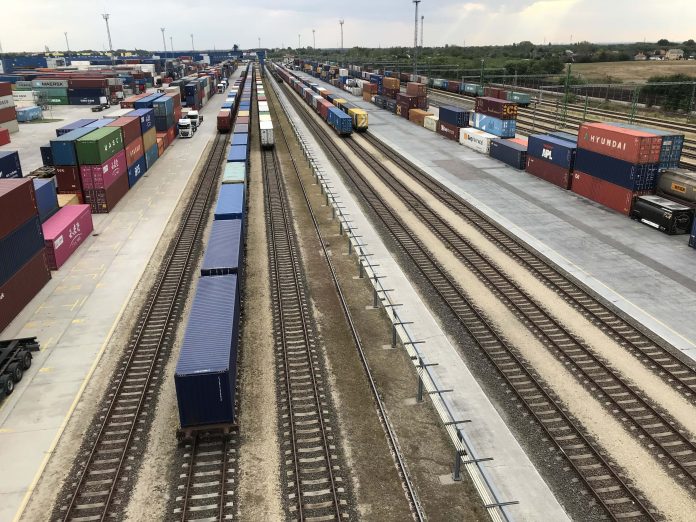
Port and logistics infrastructure specialist Hamburg Port Consulting (HPC) has presented operational development design plans for the BILK intermodal terminal in Budapest.
Budapesti Intermodális Logisztikai Központ (BILK) had a throughput of 230,000 TEU last year and is one of Hungary’s largest intermodal logistics hubs.
With cargo handling capacity almost maxed out, HPC took it upon itself to answer how it could increase the terminal’s capacity and strengthen BILK’s position in the network.
This includes storage size, shunting performance, equipment utilisation, and possibly a shift in the mix of cargo unit types – containers, trailers, and swap bodies, according to HPC.
“In asking HPC to carry out this work, we wish to take further advantage of Budapest terminal’s unique location. We have realised the changing demands of our customers and are actively working on solutions together with our partners,” explains Attila Czöndör, CEO of BILK.
“We manage maritime, continental and Eurasian traffic at the same time at the terminal and want to ensure that all of this traffic, with its different characteristics, can be handled flexibly, yet punctually and reliably,” he added.
The detailed HPC assessment included considerations of a wide range of options, such as a study of current terminal capacity (tracks, lift, yard, gate) and sensitivity analysis of comprehensive design parameters such as reduction of unit dwell times and train turnarounds as well as changes in modal unit volume splits and traffic types.
Moreover, the effects of faster gate processes and reduced gate spikes through the use of technology solutions such as pre-announcement, optical character recognition (OCR) and self-check-in have been studied.
Finally, HPC said that large increases in annual volumes will strain current operational processes with a consequent negative impact on work safety due to limited space availability and crossing traffics if no changes in operational procedures are considered.
“We see a real need to optimally adapt terminals, BILK among them, to the changing requirements of the railway companies. Growing traffic from the Eurasian region and higher proportions of non-stackable cargo in the continental traffic are leading to new challenges to which the terminal layout and processes must adapt in order to offer competitive services in the long term,” stressed Frank Busse, associate partner and business development manager Europe at HPC.





